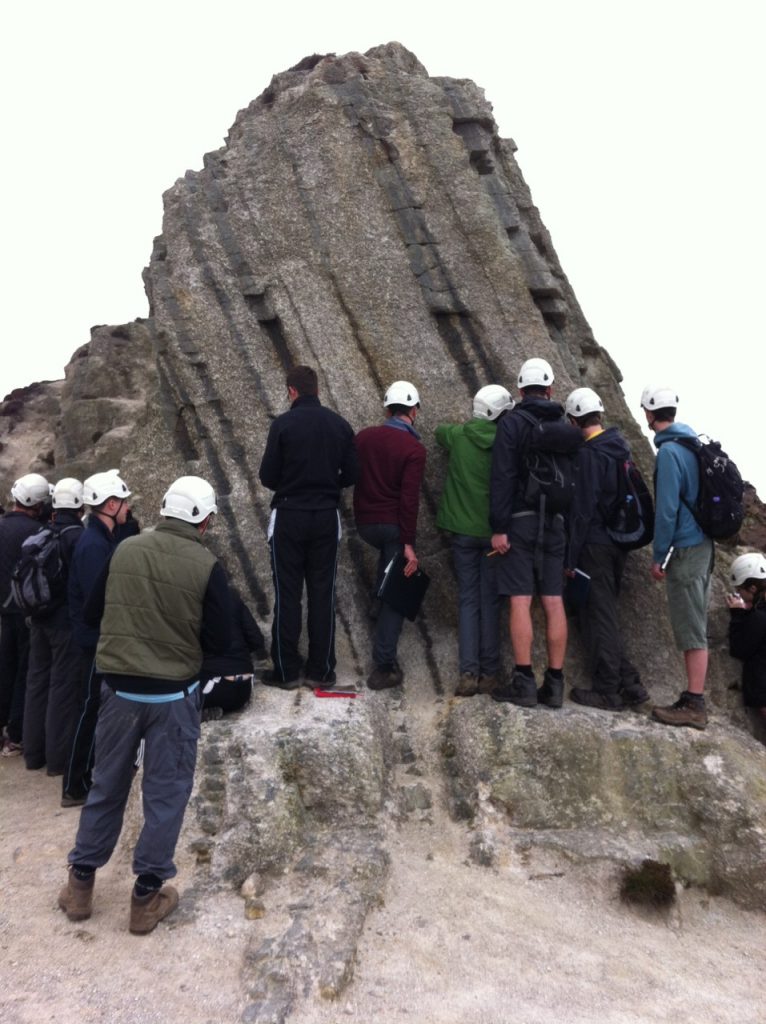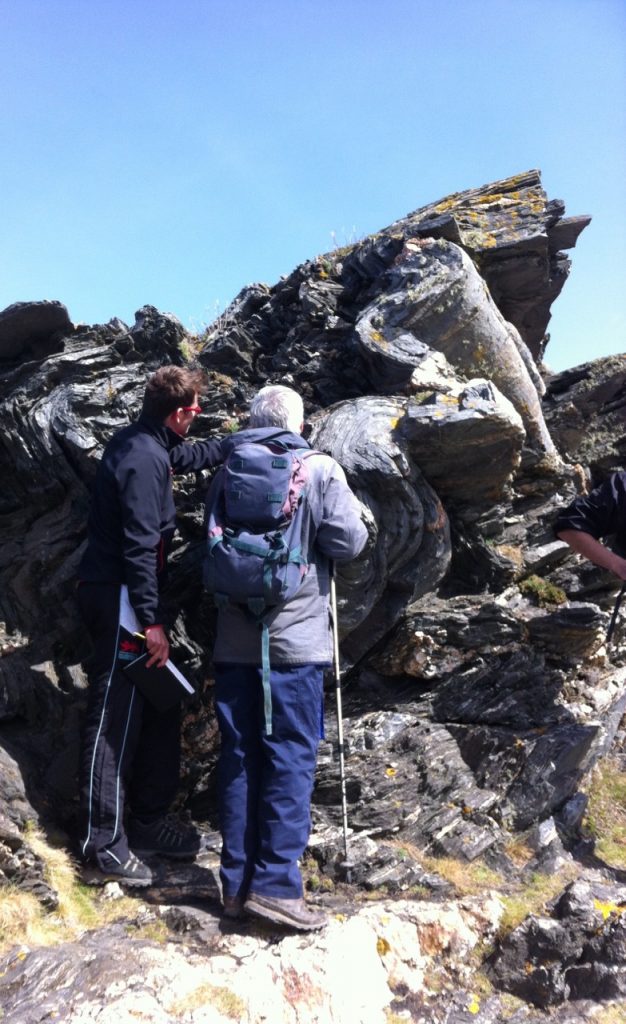This year’s Cornwall leg of the SW of England field trip was bigger and sunnier than ever – tanned faces, record number of students, big smiles and lots of lovely igneous and metamorphic rocks. The trip starts in Falmouth to show the second year undergrads some world-class geological localities and then to Bude for impressive structures associated with the formation and closure of the Culm Basin. The challenge for our enthusiastic second years being how to align all this new geological information with the broader tectonics of the Variscan Orogeny and Devonian & Carboniferous geology.
Day one started in the mantle and on the very green, serpentinised peridotite of the lizard peninsular with beautiful bronzeite pyroxenes gleaming in the sunlight of the blue Cornish skies. Then, with the mantle already beginning to melt, a few steps to north we crossed the Moho, to a few of the groups delight… and made our way into a troctolite and layer gabbros sequence. Identifying minerals in the morning and then on to the sheeted plagioclase-rich dykes in the afternoon we put the full story together and by the end of the day all were convinced we had walked a section of an ophiolite sequence and experienced the formation of oceanic crust!

We granite-hopped on day 2 searching for the best examples of granite formation, alteration and fluid alteration in the crust. We found granitic bodies with pegmatitic roof complexes forming giant (5cm!) pyroxene crystals, searched a quarry for evidence of ore formation along cooling cracks and found our own treasured samples of Cassiterite (Tin-bearing mineral) and Wolframite (Iron).
The third day we travelled to Bude stopping at Trebarwith strand for squashed pillow-lavas lightly metamorphosed to greenschist minerals, and Boscastle for some multi-stage deformation and shear structures. Then on to Tintagel, where, armed with pasties and cream teas we paused to sun ourselves in full-view of ‘King Arthur’s’ mighty castle. We investigated the greenschist grade volcanic sediments and mudstones and pondered the relations between dipping beds and the various faults between Barras Nose, the beach and the castle.

The final day in Bude was one of structural integrity… We impressed the students with the chevron folding at Millook and descended on the beach at Bude, not for the surf, but for strike and dipping. With some gentle reminders from Nigel of how to take strike, dip, plunge and trend the undergrads were let loose on the folded Late Carboniferous Bude sequence to measure the beds and search for evidence of flow. Finding rippled surfaces and measuring the palaeoflow direction the data was later used in a stereonet exercise back at the hotel whilst watching the Oxbridge boat race on the TV.
The group of undergrads and demonstrators was an enthusiastic one and all enjoyed the rocks, the minerals, the Tributes and the Falmouth social scene.
Lois Salem MSci 2009-2013, PhD 2013-

